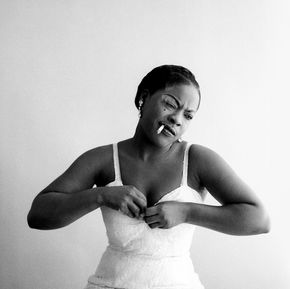FOTOTECA SIRACUSANA
PHOTOGALLERY - FOTOGRAFIA VINTAGE - BIBLIOTECA TEMATICA - CAMERA OSCURA B&W - DIDATTICA
SCRIPTPHOTOGRAPHY
Jerry SHATZBERG (USA)

JERRY SCHATZBERG
Lo conosciamo come regista di film culto. Di due, in particolare, “Panico a Needle Park” (1971), che segna l’esordio di Al Pacino e “Lo Spaventapasseri” (1973), un road movie premiato a Cannes, ma non sono in molti a sapere che prima di dedicarsi alla cinematografia Jerry Schatzberg è stato un fotografo. New York, anni ’60, il mondo stava cambiando e aveva deciso che la metropoli statunitense fosse la culla dei talenti più brillanti. Se si possedeva coraggio e sfrontatezza New York era il posto in cui vivere. Ma se un ebreo del Bronx voleva farsi strada nella vita di sfrontatezza doveva averne una misura doppia. Proprio come Schatzberg: frequentazioni giuste, contatti giusti e presto le sue fotografie finiscono elle riviste più lette di quegli anni, ‘Vogue’ ed ‘Esquire’. Poi gli amori. Uno in particolare, Faye Dunaway, che lo lasciò per Marcello Mastroianni: gli dèi si accoppiano sempre e solo tra di loro. Gli incontri si susseguono, e saranno determinanti. Con Bob Dylan, per esempio. Jerry Scharzberg incontra Dylan mentre questi, già all’apice della carriera, sta registrando “Highway 61 Revisited”. Dylan vuole scrollarsi definitivamente di dosso l’immagine del folk singer, ha bisogno di qualcuno che costruisca un’immagine diversa, più contemporanea in linea con le sue nuove produzioni elettriche. L’incontro, dal quale scaturirà un libro, “Thin Wild Mercury”, stringerà tra i due un rapporto intenso, fiduciario, tanto che una fotografia di Schatzberg diventerà (la vedete nella selezione) la copertina di un altro capolavoro di Dylan, “Blonde on Blonde”. Poi, il cinema. Ma questa è un’altra storia. Le fotografie di Schatzberg colpiscono per la loro eleganza. Forse non saranno fotografie che aggiungono molto a un genere di fotografia molto in voga in quegli anni e che ha interpreti eccellenti, ma di sicuro restituiscono un senso di rilassata complicità e, in taluni casi, si scorge il vezzo dell’estemporaneità quale cifra fondante del successo – la fotografia per l’album di Dylan è piuttosto sfocata perché i due erano intirizziti dal freddo inverno di New York. Più spesso la ricercata casualità lascia il passo alla posa in studio o a scatti rubati nel backstage. In entrambi i casi tuttavia la ricerca formale non è mai disgiunta ora da un sottile senso dello humor (le fotografie di Claudia Cardinale e di Edie Sedgwick sembrano intenzionate a smontare l’allure divistico), ora da una più profonda ricercatezza volumetrica (la fotografia di Faye Dunaway ne è un esempio). Schatzberg ha una sua inderogabile sensibilità, una peculiarità che lo conduce alla ricerca di una complicità con il soggetto ritratto e non solo. Si direbbe che lo stesso tentativo, peraltro riuscitissimo, è stato la guida per il suo film più celebre e abbrezzato, “Lo Spaventapasseri”, l’intrapresa di un viaggio coast to coast durante il quale mentre ogni sogno si sgretola a ogni miglio, vediamo come si rinsalda l’amicizia tra due outsider. Buone fotografie, buon cinema. Il talento, quando c’è, si estende ovunque.
Giuseppe Cicozzetti
foto Jerry Schatzberg
We know him as a cult film director. Two, in particular, "The Panic in Needle Park" (1971), which marks the debut of Al Pacino and “Scarecrow" (1973), a road movie awarded in Cannes, but not many people know that before engage in cinematography Jerry Schatzberg was a photographer. New York, 1960s, the world was changing and had decided that the US metropolis was the cradle of the most brilliant talents.
But if a Jew from the Bronx wanted to make his way in the life, he would have a double measure of effrontery. Just like Schatzberg: right acquaintances, right contacts and soon his photographs end up in the most read magazines of those years, ‘Vogue’ and ‘Esquire’. Then loves. One in particular, Faye Dunaway, who left him for Marcello Mastroianni: the gods always and only mate each other. The meetings follow one another, and will be decisive.
With Bob Dylan, for example. Jerry Scharzberg meets Dylan while he, already at the peak of his career, is recording "Highway 61 Revisited". Dylan wants to shake off the image of the folk singer, he needs someone who builds a different, more contemporary image in line with his new electric productions. The meeting, from which a book will emerge, "Thin Wild Mercury", will create an intense, trusting relationship between the two, so much so that a photograph of Schatzberg will become (you see it in the selection) the cover of another masterpiece by Dylan, "Blonde on Blonde”.
Then the cinema. But this is another story. Schatzberg's photographs impress with their elegance. Perhaps they will not be photographs that add much to a genre of photography that was very much in vogue in those years and that has excellent interpreters, but certainly give back a sense of relaxed complicity and, in some cases, we can see the quirk of extemporaneousness as the founding figure of success - photography for Dylan's album is quite blurry because the two were numb ‘cause the cold New York winter. More often the refined casualness gives way to the studio pose or stolen backstage shots. In both cases, however, formal research is never separated from a subtle sense of humor (the photographs of Claudia Cardinale and Edie Sedgwick seem intent on removing the divergent allure), now from a deeper volumetric refinement (the photograph of Faye Dunaway is an example). Schatzberg has its own exceptional sensitivity, a peculiarity that leads him to search for complicity with the portrayed subject and beyond. It could be said that the same attempt, however very successful, was the guide for his most famous and appreciated film, "Scarecrow", the venture of a coast to coast trip during which, while every dream crumbles with every mile, we see how the friendship between two outsiders is strengthened. Good photographs, good cinema. Talent, when it exists, extends everywhere.
Giuseppe Cicozzetti
ph. Jerry Schatzberg








